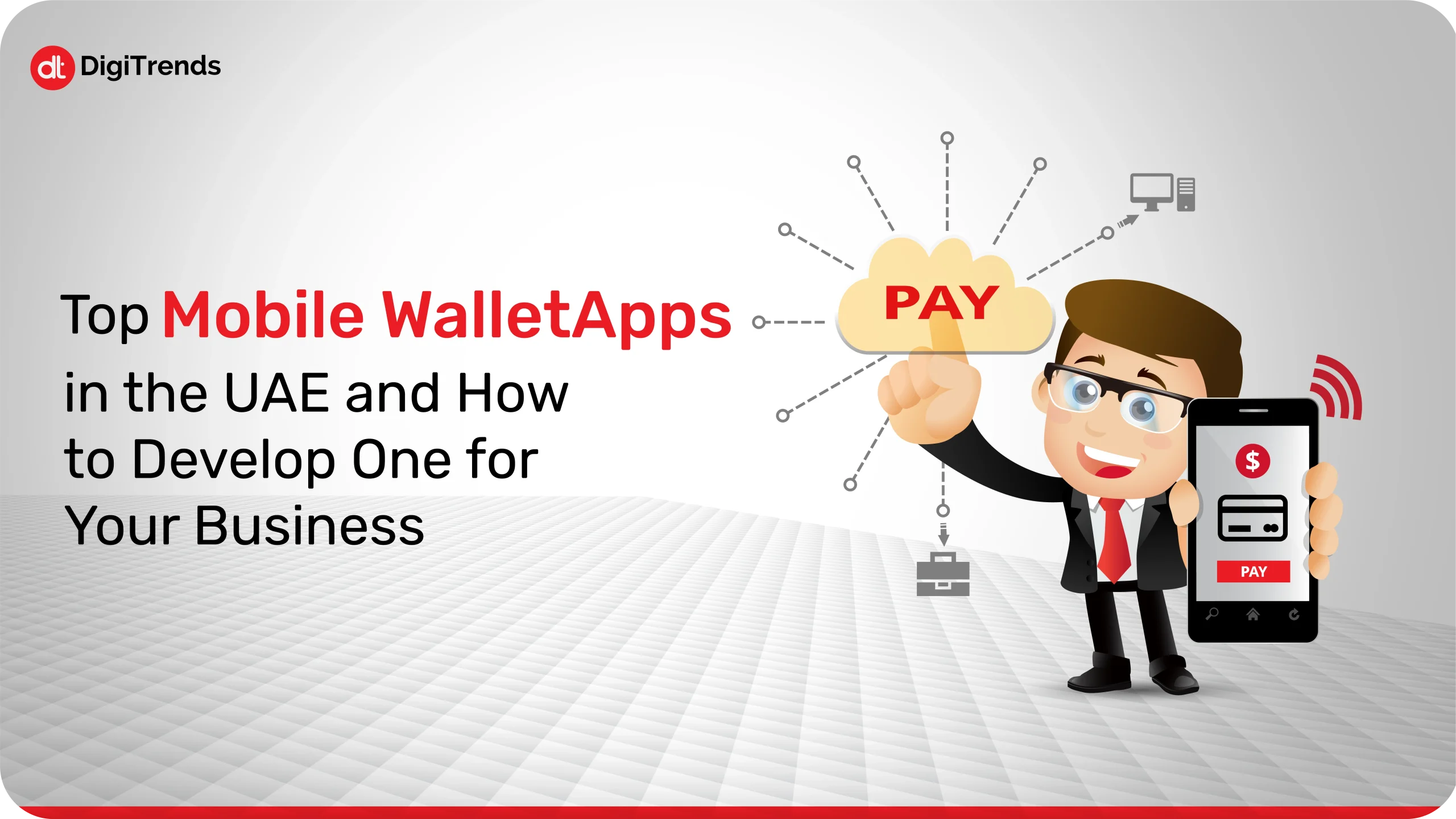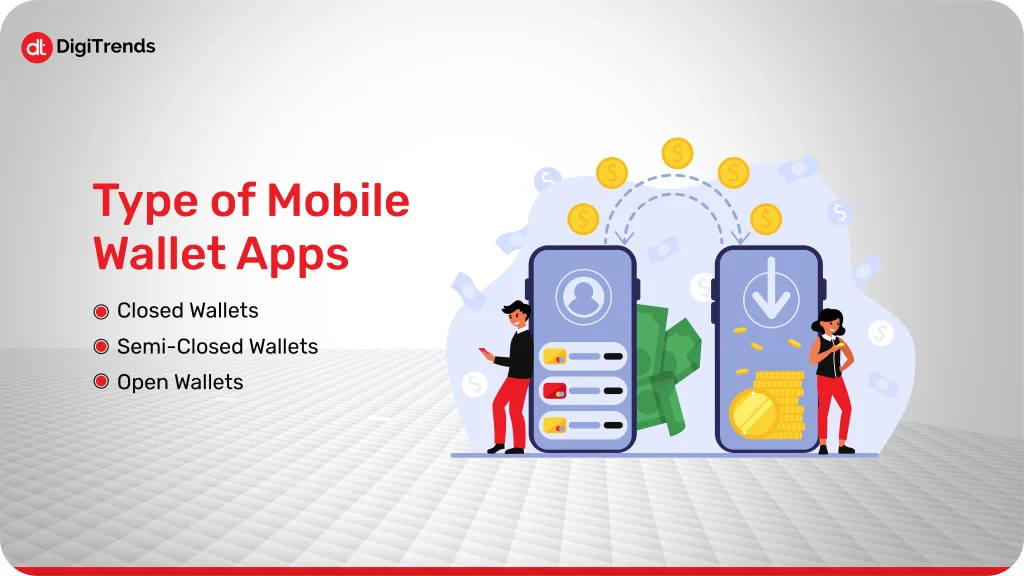
AI Reducing Healthcare Costs: Real Savings Backed by 7 Startup Case Studies
Look at the real numbers from healthcare organizations that show AI reducing healthcare costs in real. The AI lens makes costs look controllable.
Continue Reading
Have you noticed that cash is quickly disappearing from daily life in the UAE?
Whether you are paying at a coffee shop, shopping online, or renewing a government service, chances are that you’re using your phone for most of the transactions. This is due to a surge in mobile wallet apps in the past few years. Mobile wallet apps have become the primary method for paying, splitting bills, or sending money.
The UAE’s push toward a cashless economy is one of the strongest in the Middle East. The government is also actively encouraging digital payments across both private and public sectors, while banks and fintech companies in the UAE are making it easier for people to use mobile wallets.
What do the numbers say about mobile wallet app adoption?
The 2025 Global Digital Shopping Index (UAE Edition) found that 67% of UAE consumers used their phones for their most recent retail purchase, marking a 23% increase since 2022. Nowadays, people are not just using wallets to pay, but they are also using them to manage their finances, track expenses, and even access reward programs. What this depicts is that mobile wallet apps in the UAE have become more than a convenience; it is now a lifestyle necessity.
So, what does this mean for businesses?
Well, for businesses, this is both an opportunity and a responsibility. Consumers have their own share of demands when it comes to mobile wallet apps; they want instant, secure, and contactless payment options everywhere. So, no matter what business it is, if you are not offering digital payments, chances are that you will lose your customers to competitors who do.
Let’s explore everything you need to know about the top mobile wallet apps in the UAE, how they’re leading the market, how they work, and what it takes to build one.
Before we find out about the top mobile wallet apps in the UAE, it is important to know what mobile wallet apps actually are and how they work. Let’s have a look:
A mobile wallet app basically lets users store funds, link their bank or prepaid cards, make digital payments, send money, pay bills, and top up services, etc., all from their phone.
What makes a mobile wallet app the best?
It is a mix of ease of use, security, latest features, good UX, and regulatory compliance. When we talk about mobile wallet apps in the UAE, we mean both local wallets and international ones that residents and tourists use daily.

There are three main categories of mobile wallet apps. Let’s have a look:
Closed wallets are issued by a company for use only within its ecosystem (for example, the Careem Pay wallet can be used within the Careem app).
These wallets allow transactions with multiple merchants and services that partner with the wallet provider (like Payit by FAB).
These wallets are linked to major banks or payment networks, allowing users to make payments anywhere, withdraw cash, and transfer funds freely (like Apple Pay or Google Pay).
Each type of mobile wallet app serves a different audience, but their goal is the same: to make payments simpler, safer, and completely digital.
Dubai is one of the leading regions in digital transformation, and mobile wallets are a big part of it.
The Central Bank of the UAE’s National Payment Systems Strategy (NPSS) actively promotes cashless transactions to enhance financial inclusion and transparency. That’s why you’ll notice more and more businesses, from small cafes to large malls, encouraging contactless payments.
This growth is driven by consumer trust, tech-savvy youth, and a strong financial infrastructure supported by government regulation.
Now that you know what mobile wallet apps are, how they work, and why they matter, let’s look at the top mobile wallet apps in the UAE that are truly making a positive difference for the UAE’s cashless revolution. The country’s financial landscape is unique, a mix of traditional banks, telecom companies, and global tech giants, all competing to create the best mobile wallet apps for consumers and businesses.
Here are the leading mobile wallet apps in the UAE, how they work, and what makes each one stand out.
eWallet is developed by Etisalat in partnership with Noor Bank. This is one of the UAE’s first fully licensed digital wallets. This mobile wallet is designed for both locals and expatriates. It offers a secure way to send, receive, and save money.
Key Features:
The biggest advantage that eWallet offers is accessibility. With the help of eWallet, users don’t need a bank to get started; they can load directly through kiosks and partner outlets. This makes it more inclusive for residents who may not have access to traditional banks.
Why it stands out:
eWallet has a good reach among non-bank users and small merchants who look for secure payments, and behind this reach is Etisalat’s strong network and government backing.
Payit is a digital wallet which is powered by First Abu Dhabi Bank, and is one of the most widely used mobile wallet apps in the UAE. It has a lot of features, like allowing users to send and receive money, split bills, and pay merchants, all without the need for physical cash.
Key Features:
Payit has also launched Payit for Business, which is basically a merchant solution that allows SMEs to accept payments instantly without the use of POS machines.
Why it stands out:
It’s backed by one of the UAE’s largest banks and is fully integrated with local financial systems. Payit’s combination of consumer and business tools makes it one of the best mobile wallet payment apps for everyday use.
Apple Pay is one of the mobile wallet players that dominate the premium smartphone segment in the UAE, and it’s accepted by nearly every major retailer, restaurant, and e-commerce platform.
Key Features:
Apple Pay is known for its reliability and a simple user experience. Specifically for iPhone users, Apple has built an entire lifestyle when it comes to digital payments, from groceries and fuel stations to online checkouts; it offers everything.
Why it stands out:
It’s global, secure, and reliable. Plus, the integration with iOS devices makes it a natural choice for Apple users who want frictionless payments.
Google Pay offers the same level of convenience and flexibility for Android users as Apple Pay. It’s also gaining traction quickly in the UAE thanks to Google’s partnerships with major banks and merchants.
Key Features:
Google Pay is a good digital payment platform for people who prefer to use Android’s open ecosystem and use multiple Google services like Gmail, Maps, or YouTube for integration.
Why it stands out:
Google Pay provides a seamless user experience across Android and Chrome, which makes it one of the top mobile wallet apps for both residents and visitors.
ENBD Pay is a mobile wallet launched by Emirates NBD, which is one of the largest financial institutions in the UAE. It was launched to make contactless and mobile payments effortless for its customers.
Key Features:
Why it stands out:
It offers a mix of convenience with security and loyalty benefits. Emirates NBD Pay can also be integrated with smartwatches and wearables, which makes it great for tech-savvy consumers.
Finally, Samsung Pay is a strong player when it comes to mobile wallet apps, especially for Android users. It’s accepted nearly everywhere in the UAE due to its unique ability to work with both NFC and MST (Magnetic Secure Transmission) technologies.
Key Features:
Why it stands out:
It is highly secure and reliable, which makes it a widely accepted mobile wallet.
While each app has its own strengths, they all share three core characteristics:
Together, these top mobile wallet apps have helped the UAE move closer to its goal of becoming a fully cashless society, a milestone that could happen within the next few years.

If you’re thinking about creating your own mobile wallet app, you’re stepping into one of the most dynamic areas of fintech in the UAE. But building a wallet isn’t just about coding an app and connecting it to a payment gateway. It’s about trust, security, user experience, and compliance, especially in a regulated market like the UAE.
Here’s a complete breakdown of how to go from concept to launch.
Before writing a single line of code, get clarity on who you’re building the app for and why.
Ask questions like:
For example, a wallet targeting gig workers might focus on fast salary transfers, while one for retail shoppers would prioritize QR payments and cashback rewards. The clearer your audience, the smoother your design and feature decisions will be.
In the UAE, mobile wallet apps fall under the oversight of the Central Bank of the UAE (CBUAE), which ensures that all payment systems operate securely and transparently.
If you plan to develop or operate a wallet, you’ll need to:
Ignoring compliance can delay your launch or even result in suspension. So, working with legal and fintech advisors familiar with UAE regulations is non-negotiable.
Depending on your business model, you can choose between:
In the UAE, semi-closed wallets are the most common for startups, while banks and telecoms typically build open wallets.
A great mobile wallet balances simplicity and utility. Here are the essential features you’ll need:
| Category | Features to Include |
| User Features | Registration, biometric login, bank card linking, balance check, fund transfer, bill payments, QR/NFC payments |
| Security Features | Encryption, two-factor authentication, OTP verification, biometric access, and fraud detection |
| Business Features | Merchant dashboard, analytics, customer insights, loyalty integration, and refunds management |
| Support Features | In-app chat, FAQs, push notifications, transaction history |
The key is to start with core features and then expand with add-ons like loyalty programs, budgeting tools, or crypto integrations once your base model is stable.
Here’s the thing: financial apps live or die by design. A confusing interface can kill trust faster than a security breach.
When designing your app:
A smooth, intuitive design not only builds confidence but also increases transaction frequency and retention.
Your technology stack determines how well your app performs and scales. A typical setup for a mobile wallet app looks like this:
| Layer | Recommended Tools |
| Frontend (Mobile App) | Flutter, React Native, Swift (iOS), Kotlin (Android) |
| Backend | Node.js, Python, Java, or .NET |
| Database | PostgreSQL, MongoDB, or Firebase |
| Payment Gateway Integration | Network International, Mashreq Pay, Stripe, or Checkout.com |
| Security | PCI DSS compliance, tokenization, and biometric authentication |
If you’re building for the UAE, always choose a gateway that’s approved by the Central Bank and supports AED transactions.
This is the heart of your app. The payment system must be fast, secure, and flexible.
When integrating, make sure you:
Most importantly, test every transaction flow multiple times before launch; any delay or glitch can erode user trust instantly.
In fintech, security isn’t an afterthought; it’s the foundation.
To ensure safety and compliance:
Since mobile wallets handle sensitive user data and money, your reputation depends on maintaining airtight security.
Once your app is ready, run several layers of testing:
When you go live, focus on marketing, onboarding, and education. The UAE’s user base is tech-savvy but diverse, so video tutorials and bilingual support go a long way.
Launching your app isn’t the finish line; it’s the starting point. Keep monitoring usage patterns, user feedback, and emerging payment trends.
In the UAE, new technologies like open banking APIs, AI-powered fraud detection, and blockchain-based payments are already influencing mobile wallet innovation. Staying ahead of these trends can set your app apart from the competition.
Regular updates, feature enhancements, and reward programs can help you retain users and increase transactions over time.
Building a mobile wallet app in the UAE isn’t a one-size-fits-all project; the cost depends on your app’s complexity, features, and compliance requirements. On average, you can expect to invest anywhere between AED 180,000 to AED 650,000 (roughly USD 50,000 to USD 175,000) for a fully functional wallet.
Here’s a simplified breakdown:
| Development Stage | Estimated Cost (AED) | Description |
| Discovery & Planning | 15,000 – 40,000 | Market research, app concept, compliance mapping |
| UI/UX Design | 25,000 – 60,000 | Wireframes, user flow, bilingual design (Arabic/English) |
| Development | 90,000 – 350,000 | Wallet creation, payment gateway, API integrations |
| Security & Compliance | 20,000 – 70,000 | PCI DSS, data encryption, KYC/AML checks |
| Testing & Launch | 15,000 – 40,000 | QA, security testing, app store deployment |
| Maintenance | 10,000+/month | Updates, server monitoring, feature enhancements |
The total cost can increase if you include advanced features like biometric verification, loyalty programs, or blockchain-based security layers. On the other hand, startups can save significantly by developing an MVP (Minimum Viable Product) first, launching with core features, and scaling later.
Building a secure, scalable, and compliant mobile wallet app in the UAE requires more than just development skills; it takes industry insight, financial expertise, and deep familiarity with local regulations.
That’s where DigiTrends comes in.
As one of the region’s trusted fintech app development companies, DigiTrends has helped banks, startups, and enterprises create digital payment platforms that are reliable, user-friendly, and fully compliant with the Central Bank of the UAE’s guidelines.
Here’s how we help you bring your mobile wallet idea to life:
Our goal is simple: to help your business create a mobile wallet app that not only functions flawlessly but also earns user trust from day one. Whether you’re a financial institution looking to modernize payments or a startup ready to enter the fintech space, DigiTrends gives you the technical backbone and strategic direction to scale confidently in the UAE’s growing digital economy.

The shift toward digital payments in the UAE isn’t slowing down; it’s accelerating. With one of the highest smartphone usage rates in the world, strong government support for fintech, and a population that values convenience, mobile wallet apps have become the new normal for how people pay, save, and transact.
From Apple Pay and Payit to eWallet and Beam, each platform has helped shape a fast, secure, and cashless payment culture. But as the market grows, so do the opportunities for new players. Businesses that move now, by creating their own mobile wallet or integrating digital payments, will be better positioned to meet modern customer expectations and build long-term loyalty.
Developing a wallet app in the UAE takes careful planning, compliance, and a deep understanding of how users behave in a digital-first economy. The good news is, you don’t have to do it alone. With the right strategy and development partner, building a secure, user-friendly, and scalable mobile wallet is entirely within reach.
The takeaway is simple: the UAE’s digital future is already here, and mobile wallet apps are at the center of it. The question isn’t whether your business should adopt one, but how soon you can implement it.